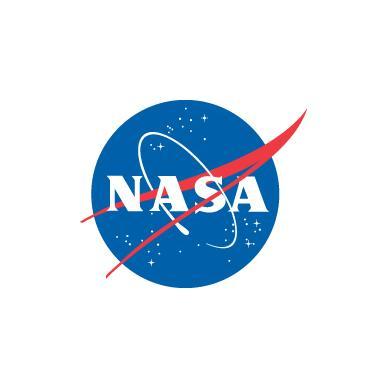Mock sample for your project: Aviation Radiation API
Integrate with "Aviation Radiation API" from amentum.space in no time with Mockoon's ready to use mock sample
Aviation Radiation API
amentum.space
Version: 1.5.0
Integrate third-party APIs faster by using "Aviation Radiation API" ready-to-use mock sample. Mocking this API will help you accelerate your development lifecycles and improves your integration tests' quality and reliability by accounting for random failures, slow response time, etc.
It also helps reduce your dependency on third-party APIs: no more accounts to create, API keys to provision, accesses to configure, unplanned downtime, etc.
Description
Our atmosphere protects us from a hostile space radiation environment comprising high energy particles of solar and intergalactic origin. Solar radiation is significant during unpredictable and short lived solar flares and coronal mass ejections (CMEs); however, galactic cosmic radiation (GCR) is omnipresent. The GCR intensity varies with latitude, longitude, and time due to effects of solar activity on the interplanetary magnetic field, as well as the Earth's magnetic field. Space radiation collides with gases in the atmosphere, leading to a complex shower of high energy radiation, the intensity and composition of which varies spatially and temporally. Excessive exposure to radiation can damage DNA and lead to long-term health effects such as an increased risk of cancer. Resulting radiation levels at commercial aircraft altitudes are greater than at sea level due. Aircrew are classified as radiation workers in some countries; however, planning to limit their exposure, and monitoring, is generally lacking. Both real-time measurements and predictive models of radiation in the atmosphere are important to mitigate the radiation risk crew.
We host a RESTful API to models of cosmic ray induced ionising radiation in the atmosphere. The PARMA or CARI7 endpoints can be used to calculate Effective Dose or Ambient Dose Equivalent at a point.
The Route Dose API calculates the same quantities along a great circle route between two airports using CARI7.
API requests must contain a key "API-Key" in the header (see code samples). Obtain a key from here.
Help us improve the quality of our web APIs by completing our 2 minute survey here.
Amentum Pty Ltd is not responsible nor liable for any loss or damage of any sort incurred as a result of using the API.
Copyright Amentum Pty Ltd 2021.
Other APIs by amentum.space
Space Radiation API
Galactic Cosmic Rays from outside our solar system generated by
supernovae and other phenomena;
Solar Energetic Particles produced by the Sun during intense and
sporadic bursts of activity; and
Trapped Radiation: energetic particles confined by Earth's magnetic
field, usually comprising an inner belt of mostly high energy protons
and an outer belt dominated by lower energy electrons and plasma.
Understanding the space radiation environment for a particular mission profile is becoming increasingly important. Commercial off-the-shelf electronic components that aren't resilient to space radiation are now prevalent. Longer duration missions to cislunar space, Mars, and beyond are placing astronauts at greater risk of radiation exposure.
API requests must contain a key "API-Key" in the header (see code samples). Obtain a key from here.
Help us improve the quality of our web APIs by completing our 2 minute survey here.
Amentum Pty Ltd is not responsible nor liable for any loss or damage of any sort incurred as a result of using the API.
Copyright Amentum Pty Ltd 2021.
Gravity API
ocean surface would take if only gravity and the rotation of the Earth
were considered. The geoid is the surface that defines zero elevation.
The geoid height is the difference between an ideal reference ellipsoid and the geoid.
The gravity anomaly is the difference between the acceleration due to gravity on the Earth's surface and the value calculated assuming the reference ellipsoid.
The official Earth Gravitational Model EGM2008 was developed and released to the public by the National Geospatial-Intelligence Agency (NGA).
Our EGM2008 API provides on-demand access to the EGM2008 model, as implemented by the open-source GeographicLib Gravity library.
API requests must contain a key "API-Key" in the header (see code samples). Obtain a key from here.
Amentum Pty Ltd is not responsible nor liable for any loss or damage of any sort incurred as a result of using the API.
Copyright Amentum Pty Ltd 2021.

Atmosphere API
API requests must contain a key "API-Key" in the header (see code samples). Obtain a key from here.
Help us improve the quality of our web APIs by completing our 2 minute survey here.
Amentum Pty Ltd is not responsible nor liable for any loss or damage of any sort incurred as a result of using the API.
Copyright Amentum Pty Ltd 2021.
Other APIs in the same category
Google My Business API

Daymet Single Pixel Extraction Tool API
If you would like to learn how to automate the download of multiple locations for the Daymet Single Pixel Extraction Tool, click here.
HERE Tracking
HERE Tracking also includes end-user mobile and web applications that can be used to demonstrate the product.
World Time API
Checks API
Introduction
Welcome to the Truora Check RESTful API reference. You may also want to check out our Validations API docs or our Signals API docs.
Truora Check API allows performing full background checks on people, vehicles and companies. There are three main types of background checks:
Personal background check: Verifies national IDs in multiple databases of public and legal entities in the LATAM region. For every national ID, returns information on: personal identity, criminal records, international background check, and professional background.
Vehicle background check: Verifies the vehicle documents and the owner identity in multiple databases of public and legal entities in the LATAM region. For every vehicle and owner type, returns information on: personal identity, driving records, criminal records, and vehicle information.
Company background check: Verifies the tax ID or a company name in multiple databases of public and legal entities in the LATAM region. For every company, returns the associated: business status, legal and criminal records, and media reports.
API Key V1 is live!
API key version 1 is now live. Users with version 0 API keys are not immediately required to upgrade to V1 but should plan to do so at their earliest convenience. The changes for integration with API keys v1 are as follows:
The field `user_authorized` is now required to perform person checks. This field indicates the API user has authorization to perform the check in compliance with data protection law.
The field `homonym_scores` is no longer included in our person check response as its results are already included in the body of the check and keeping them duplicated is generating unnecessary confusion.
API composition
Endpoints
Check endpoints: Provide an easy way to create and search for a background check. They also allow inserting groups of checks into reports. Each check contains scores, datasets and databases.
SDKs
If your favorite language was not on the next list, You can use our OpenAPI 3 spec to generate it using the Open API Generator.
To download the SDK click on the desired programming language:
C# .Net Core
Elixir
Go
Java
JavaScript
Objc
Php
Python
Ruby
You can see the full list of supported platforms here:
https://openapi-generator.tech/docs/generators
Storm Glass Marine Weather

LotaData

The Water Linked Underwater GPS API
Recommended approach for connecting to a Underwater GPS via the API is:
If "GET /api/" times out, the Underwater GPS is not running (on this IP address)
If "GET /api/" responds with 200 OK check that the api version returrned (eg "v1") is supported by the client (eg: also supports "v1").
If the api version returned does not match what the client supports: give an error to the user and recommend upgrading. (Eg: response is "v2" while client only supports "v1")
If "GET /api/" responds with 301 Moved permanently. "GET /api/v1/version" to check if the kit has a version earlier than 1.5.
"GET /api/v1/version" will always respond with 200 OK on Underwater GPS earlier than 1.5 release.
Configuration API is is not considered stable and will potentially be changed



